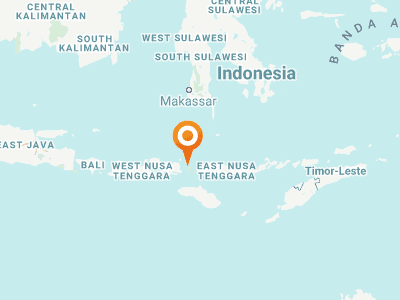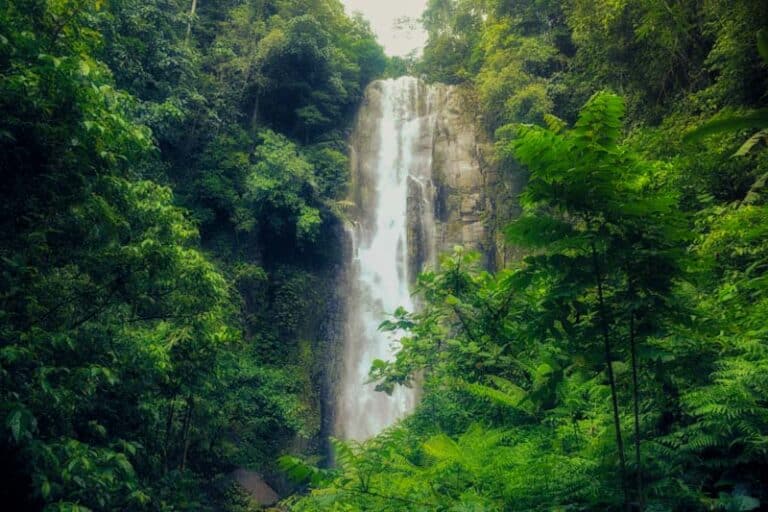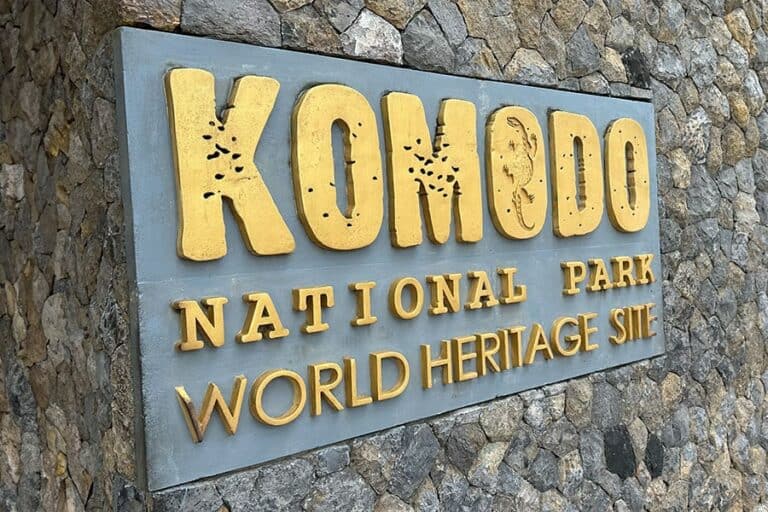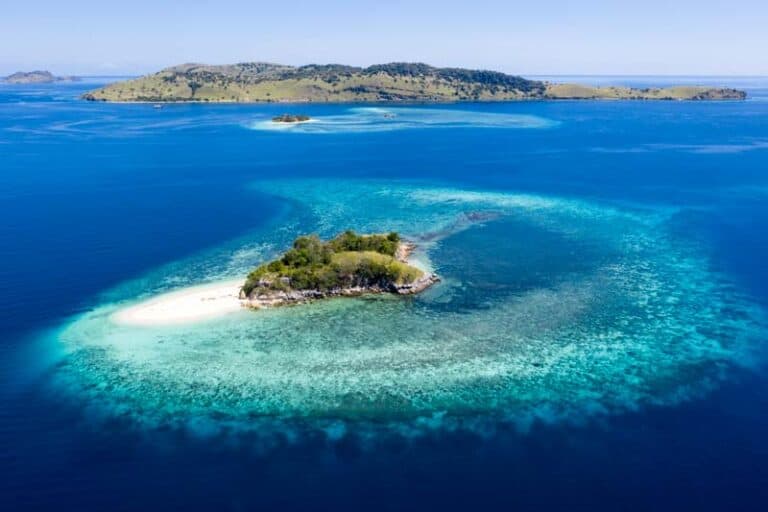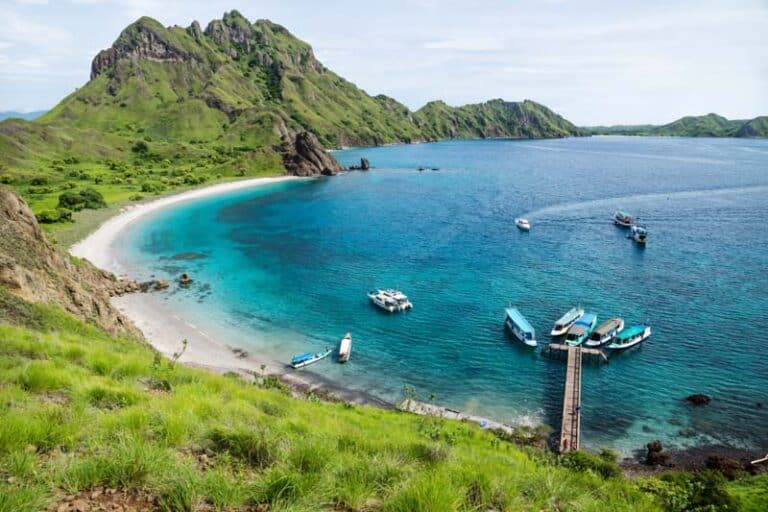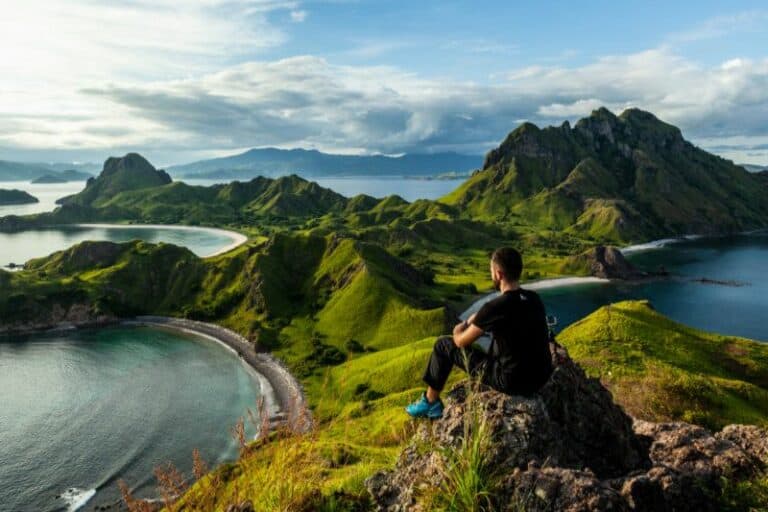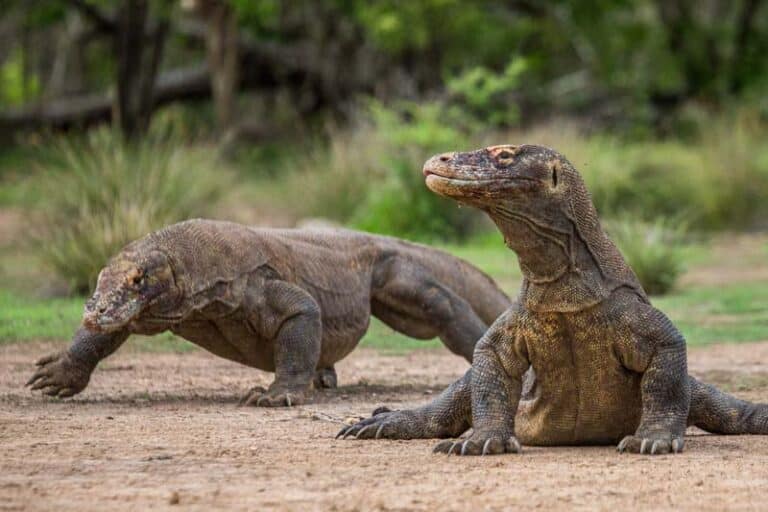Komodo Island is a part of Komodo National Park, Indonesia, the habitat for the famous Komodo dragons, one of the ancient largest lizard species on earth with vulnerable to extinction status. Travelers visit this island to see this wonder of the world while doing other activities such as trekking, snorkeling, scuba diving, or island hopping.
This one of the 17,508 islands in Indonesia is located around 2.5 hours by standard boat, or roughly 1.5 hours by speed boat from Labuan Bajo, Flores, which can be reached by 1.5 hours flight from Bali or multi-day trip by boat from Bali or Lombok. To reach Komodo Island, you can join some tour operators in Labuan Bajo, providing a day trip Komodo tour to Komodo Island, Rinca, and Padar Islands.
Encounter the Komodo Dragons
The estimated 6,000 population of the Komodo dragon is spread among Komodo Island, Rinca Island, and smaller surrounding islands in Western Flores, Indonesia. Guided by the ranger during your visit, you can do the hike and witness some Komodo dragons sitting lazily under the shade or wandering through the wilderness. Believed to exist since 4 million years ago, Komodo dragons kill their prey by a poisoning bite with its shark-like teeth. These solitary animals are capable of running rapidly, diving up to 4.5 m (18 ft.), and climbing trees when young.
To enter the Komodo National Park (Komodo Island, Rinca Island, Padar Island), it is required to pay the entrance fee. There are also other fees, such as ranger fees, hiking fees, canoeing fees, diving fees, snorkeling fees, etc. Although you can usually pay to the dive center or dive operator arranging your trip, make sure to check the updated prices and bring enough cash because there is no ATM in this island – nearby ATM is on Labuan Bajo.
Travel Guide and Tips to Komodo Island
When is the best time to visit Komodo Island? It’s good to know what to expect on specific times to visit Komodo Island: April-June has amazing green landscape and calm sea with chances to see whale sharks, July-August is high season when most tourists come, and Komodo’s mating season, so it is a bit hard to spot them in Komodo Island, September-November is a good time to encounter much marine wildlife and Komodo with good weather and fewer tourists, and December-March is monsoon and rainy season so make sure to check if some tour operators are still running during this time.
The weather in Komodo Island can be quite hot, with the temperature varies from 20°C-40°C (68°F-104°F). Since activity on the island involves a lot of trekking, make sure to pack and wear the right clothes, comfortable shoes, hat, high SPF sunblock, and a lot of water. You can also bring your swimsuit along just in case you cannot hold yourself to jump into the crystal-clear seawater on the dreamiest beaches, including to snorkel at the Pink Beach, one of the seven beaches in the world with “pink” sand.
This page contains affiliate links. If you purchase through them, we may earn a commission at no extra cost to you. We only recommend products or services we trust. Thank you for your support!
Safety Guide in Komodo Island
Though it is very rare, Komodo dragons can occasionally attack humans, particularly if humans trigger their aggression or predatory instinct. Here are some safety tips when visiting Komodo Island:
- Always take an official guide or ranger with you, follow his direction.
- Walk, do not run or make sudden movements around a Komodo dragon.
- Keep the distance of 2-3 meters (7-10 ft.) away from the Komodo.
- It will be more fun and safe walking in a group than alone.
- Note that Komodo dragons have the ability to camouflage themselves (e.g., appear similar to a dead tree trunk), so always be careful and watch your surroundings when exploring the park.
- If an emergency arises and a Komodo chases you, run in the zigzag pattern instead of straight, and get to a traditional wooden stilt house in the park instead of climbing up a tree.
- Since Komodo dragons can smell blood as far as 3 km (1.86 miles), make sure you are not on your menstrual period or being wounded when visiting Komodo Island.
- Due to Komodo’s strong sense of smell, visitors are also advised to avoid using perfume not to get noticed.
- Since this island is generally dry, make sure to be careful with the fire, e.g., avoid smoking in this island.

